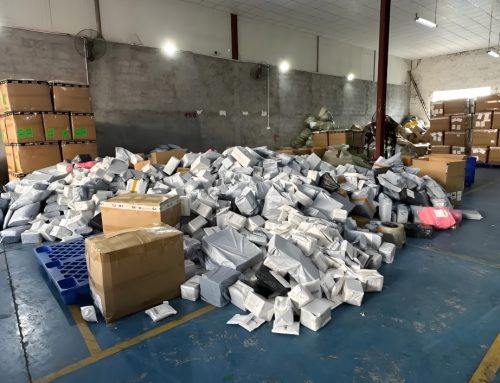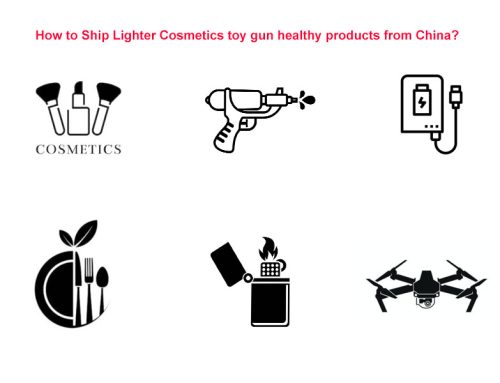The EU value-added tax reform was officially implemented on July 1st 2021, as a Shopify seller, how it affects the dropshipping business online? What kind of measures we should take to avoid the potential affects? Let’s take a look what included in the Europe VAT regulations in details.
The VAT regulations mainly aimed at the relevant measures for cross-border sales of goods sold to the EU within the EU and non-EU countries (regions). The four major reforms mainly include:
1. Repeal the distance selling threshold rule. Currently, EU merchants must register and declare value-added tax in other EU countries/regions as soon as they reach specific thresholds in specific countries/regions. For example, it is 100,000 Euros in Germany and 35,000 Euros in France. From July 1st, these distance sales thresholds will be lifted. Unless the micro-enterprise threshold is applied, cross-border sellers will be required to charge the value-added tax rate of the buyer’s country of residence from the first sale.
2. A new threshold for micro-enterprises within the EU. There is a new exemption for micro-enterprises whose turnover in each EU country/region did not exceed 10,000 euros in the past two years. Merchants eligible for tax exemption can continue to charge all EU countries/regions within their delivery area the local value-added tax rate of the EU country/region where the goods are shipped, and continue to remit money to their local tax authorities.
3. Launch one-stop (One-Stop-Shop or OSS) registration and declaration service.
4. Termination of the import value-added tax exemption policy of less than 22 euros.
5. The e-commerce platform or customs declarer is responsible for collecting and paying value-added tax.
VAT adjustments for shipments imported into the EU are mainly for B2C e-commerce imports, and both sellers (enterprises) and buyers (online consumers) will be affected. In addition, the VAT reform may also have an impact on B2B imported shipments.
The EU VAT reform only affects goods with a value of no more than 150 euros. Which means it will affect nearly all the Shopify sellers who sell on the EU market.
1. Removal of 22 euro VAT exemption
Eliminate the exemption of import value-added tax on goods imported online from non-EU countries with a unit price of less than 22 euros. In the past, the packages shipping to EU countries declare under 22 EUR usually no tax fee, however, after July 1st, all the packages ship to EU need to pay VAT;
2. One-stop service (IOSS) platform to declare and pay
Create an import plan, the value of goods does not exceed 150 euros, sellers can collect value-added tax from EU buyers at the point of sale, declare and pay value-added tax through “Import One-Stop Service” (IOSS), provide a “green channel” for goods, It is quick and easy to pass customs.
The IOSS platform is a non-mandatory and optional platform that allows you to: manage sales value-added tax in the entire EU area. You only need to register in one EU member state to manage sales value-added tax in the entire EU area. Therefore, there is no need to register for VAT in every EU country where goods are sold. Speed up the import customs clearance of shipments. Shipments with a valid IOSS number do not need to pay import value-added tax at the customs clearance link, which helps to speed up the shipment clearance.
3. The platform is responsible for collecting and paying VAT
The regulations clarified that e-commerce platforms are responsible for the withholding and payment obligations of goods and services sold by non-EU e-commerce companies on the platform. This also allows third-party platforms to “be regarded as sellers” and bear more responsibility.
When an e-commerce platform promotes B2C business, its withholding and payment system will apply to the following two situations: imported goods value not exceeding 150 euros; remote cross-border transactions or domestic transactions of non-EU sellers of any value goods.
What are the changes for packages shipping from China to EU countries after July 1st
1. For goods that officially arrive at the ports of entry in the EU from 00:00 on July 1, 2021, the EU will cancel the exemption of value-added tax (VAT) for goods with a value of ≤22 euros, and all goods imported into the EU shall be subject to VAT.
2. The customs of the country of entry will verify the I-OSS number of the transaction before the arrival of the goods. If an invalid or invalid number is used, it will automatically reject the import customs clearance procedures for the goods with the I-OSS number.
3. Goods that have been registered for IOSS will no longer be levied on import value-added tax when they are imported. Goods that have not registered for IOSS will be transferred to the destination for customs clearance by the country of entry under T1 conditions.
The impact on package shipments to the EU is mainly reflected in:
1. Goods declared using IOSS will be easier to complete customs clearance procedures when they arrive in the EU. Regardless of the final destination of the goods, the goods declared using IOSS can be cleared and registered in any EU member state;
The use of I-OSS can deliver goods to EU countries in the most efficient way, which is mainly manifested in the following two characteristics:
A: Complete customs clearance of all EU goods in the same country of entry
B: Goods that have been declared using IOSS will no longer be subject to import value-added tax at the time of import
2. For the goods declared by I-OSS, the seller will be responsible for collecting value-added tax on the goods in the sales process, and declare and pay the value-added tax within one month after the sale. Non-EU sellers must appoint an IOSS intermediary, which should pay VAT at the end of the month.
After the implementation of IOSS, what changes have been made to the package declaration?
1. IOSS number is required
2. Customs code is required: 6-digit HS CODE
3. Declaring currency: single currency declaration, euro declaration
4. Parcel number and product name (multiple product names need multiple lines)
5. Declared value: consistent with the net value of the platform (excluding freight and insurance, if the value includes freight insurance and cannot be opened, the total amount will be paid)
The possible impacts for new EU VAT regulations
1> If you dropship from China to EU via Shopify, it may be necessary to update the system and main data in order to determine and apply appropriate VAT rates in multiple jurisdictions;
2>If you want to register for one-time registration and realize the payment of value-added tax for B2C shipments of no more than 150 euros in the entire European Union, you can consider registering on the IOSS platform;
3>There is no office or branch in the EU countries, but IOSS registration is required. You may need to appoint an intermediary agency to handle tax compliance issues in the EU;
4>If you want to replace all current foreign EU VAT registrations with a single IOSS registration (if applicable), please review and cancel these foreign registrations if applicable.
Expand one-stop coverage and simplify e-commerce value-added tax rules
Extend the trial scope of the one-stop mechanism from EU countries to non-EU countries. Suppliers from non-EU countries only need to register in one EU country, and they can declare and pay taxes incurred in all EU member states in one go.
The existing “remote sales threshold” will be revoked, and a “one-stop” EU VAT return (OSS) will be launched later.
VAT rates in EU countries
There are three tax rates for VAT in the UK:
20% standard tax rate (applicable to most goods and services)
Low tax rate of 5% (such as household electricity or gasoline, etc.)
0% tax rate (applicable to very rare cases)
Standard tax rates in other EU countries:
Germany: 19%
France: 20%
Italy: 22%
Spain: 21%
Austria 20%
Belguim 21%
Bulgaria: 21%
Croatia 25%
Cyprus 19%
Czech Republic 21%
Denmark 25%
Estonia 20%
Finland 24%
Greece 24%
Hungary 27%
Ireland 23%
Latvia 21%
Lithuania 21%
Luxembourg 17%
Malta 18%
Netherlands 21%
Poland 23%
Portugal 23%
Romania 19%
Slovenia 22%
Sweden 25%
05. Example of VAT calculation
The price of goods includes VAT value-added tax. For example, the final price of a product in the UK should be 120 pounds, and 20 pounds is the VAT value-added tax after the product is sold.
E.g:
①Declared value=100 pieces*100 pounds/piece=10,000 pounds,
②The first freight is 2000 pounds DUTY=10000*3.7%
③ IMPORT VAT = (declared value + first-way freight + DUTY) X 20% = (10000 + 2000 + 370) X 20% = 2474 pounds
This import value-added tax of £2,474 can be deducted from sales tax in the quarterly declaration.
Sales are divided into 3 situations to make an analysis:
①No sales
The sales tax is 0, and the net tax refund is £2,474
②All goods sold
The sales volume is 20,000 pounds, and the sales tax is 20000/6=3333.3,
The tax payable is 3333.3-2474 = 859.3 pounds
③Half of the cargo
The sales amount is 10000, the sales tax is 10000/6=1666.6, and the tax rebate is 2474-1666.6=807.3
Returned goods are counted as inventory if the customs clearance and related supporting documents are complete, and no sales tax is required.
After the implementation of the new VAT regulations, what changes have been made to companies exporting goods to EU customers?
There are two main changes that will affect the value-added tax threshold and tax return of non-EU companies:
A new import value-added tax threshold of 150 euros has been added. The current policy will exempt customers with imported goods worth less than 22 euros from VAT. From July 1, 2021, all goods are subject to import value-added tax, up to a maximum of 150 euros. Import value-added tax and customs duties exceeding this threshold are also applicable. Online merchants can choose to charge VAT on low-value goods at the point of sale instead of paying import VAT. If online merchants choose to switch to DDU (Delivery Unpaid), the import VAT will be paid by the customer. This VAT will be paid by the postal operator/customs agent on behalf of the customer and may require additional agency fees. If the OMP (online market)/platform facilitates remote sales of imported goods worth 150 euros, the OMP (online market)/platform will be liable for VAT for these sales. Please note that Shopify does not support OMP (online market)/platform.
Import one-stop (OSS) registration and declaration service. Merchants who choose to levy VAT on low-value goods can use the newly launched Import One-Stop Service (IOSS) to submit a monthly VAT return for all exported goods that have not been provided to the EU through the OMP (online market)/platform. The use of IOSS is not mandatory, and non-EU merchants who choose to use IOSS may need to appoint a financial representative.
How to register OSS as a Shopify sellers
If you selling in EU countries via Shopify you can submit a VAT application, which can be used in multiple EU countries/regions without requiring a separate tax registration for each country/region. Merchants can use OSS to submit and remit value-added tax to any EU country/region within their delivery area, but only if the country/region is not the country where the merchant is located, or is not a domestic supply in the country/region where the merchant is physically located or has inventory . For these countries, merchants should continue to submit local tax returns. OSS simplifies the filing process and avoids the hassle of merchants registering in multiple countries/regions. Merchants need to submit electronic quarterly VAT returns through their domestic OSS portal and ensure that they will keep records of all qualified OSS sales within 10 years.
New EU VAT Regulations FAQ
1. How to register OSS?
Each EU member state has an online OSS portal where you can register. One registration is valid for all sales in other EU member states where no physical store exists.
2. In which EU country should I register for OSS?
EU merchants must be registered in their country/region. In principle, non-EU merchants should register in the shipping country. If the goods are shipped from multiple EU countries, non-EU merchants can choose the EU country they want to register.
3. What should I do to use OSS?
If you want to use OSS, you should:
Applicable to the value-added tax rate of the member country where the goods are shipped or where the service is taxable
Collect value-added tax from the buyer for remote sales of goods or service supply within the EU
Submit the quarterly electronic VAT return through the OSS portal of the member country where you have registered with OSS
The VAT declared in the VAT return is paid quarterly to the member country where you have registered with OSS
Keep records of all eligible OSS sales receipts
4. Why should I register for OSS as an EU merchant?
Registering for OSS simplifies the application process, eliminating the need for you to register in multiple countries/regions.
5. Does VAT apply to tax-included orders or tax-exclusive orders?
The 150 euro threshold does not include tax and only applies to the actual value of the goods (excluding transportation and insurance costs, unless these costs are already included in the price and are not separately noted on the invoice).
6. Why should I register for IOSS as a non-EU merchant selling to the EU?
For merchants who choose to collect VAT on low-value goods from buyers throughout the EU, IOSS will allow a single declaration. In addition, customs authorities are likely to process imported goods faster (and possibly even take the “green channel”). Without IOSS, goods may remain at the border for valuation inspection, which may cause delays in delivery and/or additional value-added tax assessments.
7. I am not sure how the recent EU VAT rule changes will affect my business. what should I do?
If you are not sure how these changes will affect your business, please visit the EU official website or consult a tax advisor. You may also need to appoint a representative, such as a lawyer or accountant, to be responsible for tax reporting and payment.
8. How can I get help on registering for VAT and submitting VAT?
Here are some service providers that can help you register for VAT and submit a VAT return:
Hellotax
Simply VAT
Taxually
Avalara
Your Company Formations
After July 1, 2021, I-OSS can be used to transport goods to EU countries in the most efficient way, and unified customs clearance in the country of entry; packages without an IOSS number will be sent from the country of entry T1 to the country of destination, which is cost-effective and efficient low. If you are shopify sellers and you are looking for a professional dropshipping agent to help you dropship from China to EU, North America, Middle East, South East Asia countries stable and cost effectively, please feel free to inquire ShipAnt.






Leave A Comment
You must be logged in to post a comment.